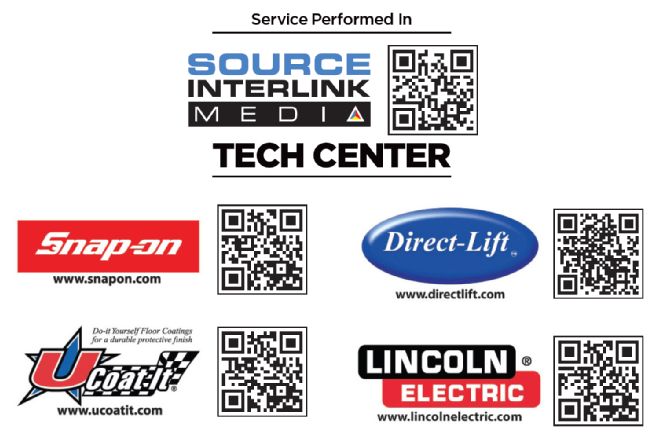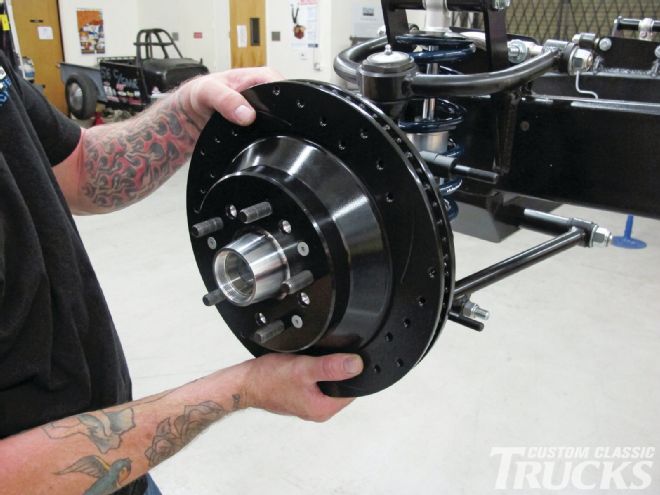
There are lots of things to love about old trucks, they certainly have vintage charm and look cool, but underneath the sheetmetal is a chassis that’s just as vintage and not nearly as cool. Throw an old truck into a hard turn or slam on the brakes for a panic stop and a historic hauler will immediately demonstrate its shortcomings and the love affair will come to an end. And what good is a great-looking truck if you don’t love to drive it?
Jason Scudellari is the guy in charge of the Source Interlink Tech Center. Along with working on a variety of magazine projects, he’s putting together a 1956 Chevy pickup as a driver. To bring the truck’s ride and handling up to contemporary standards a new chassis from Fatman Fabrications replaced the original. To make sure the stopping power was commensurate with the newfound cornering capabilities, Wilwood disc brakes are being added to all four corners.
Wilwood was founded in 1977 and they have designed and manufactured brakes for all types of competitive motorsports, agricultural equipment, industrial applications, utility vehicles, snowmobiles, quads, motorcycles, military vehicles, and of course, trucks. They stock over 300 different brake calipers, 200 types of rotors, 100 master cylinder designs, and a wide assortment of brackets, fittings, valves, and brake lines. Off-the-shelf brake calipers range in size from those used on passenger vehicles to heavy-duty brakes for the U.S. military Humvee. In short, if you’ve got something that needs brakes, Wilwood has the parts to make it happen.
If you’ve ever rubbed your hands together on a cold day you’ve experienced a byproduct of friction—heat. Brakes rely on the friction between a stationary and a moving surface to generate stopping power, which means they turn the energy of the moving vehicle into heat; unfortunately heat is also the enemy of brakes. As the friction surfaces become hotter, the coefficient of friction between the two is reduced and the brakes lose effectiveness. The term that is often used to describe this is brake fade. If you’ve driven a truck down a steep grade and found it took more and more brake pedal pressure to slow down, you’ve experienced brake fade
When it comes to dissipating heat, disc brakes have a huge advantage over drums. As the caliper only covers a small part of a disc brake’s friction surface, a large portion of the rotor is exposed to air, which keeps it relatively cool. With a drum brake most of the friction surface is in contact with the brake shoes, which leaves little surface area for cooling. Consequently, compared to discs, drum brakes get hotter faster and stay hot longer. During hard or continuous use that reduces their efficiency noticeably.
Another factor that allows disc brakes to function more effectively than drums is the wiping action inherent in their design. In wet conditions the brake pads tend to wipe water off the rotor. With drums, moisture can become trapped between the shoes and drum, which lowers the coefficient of friction considerably until the water is dispersed.
For the front of his truck Jason opted for Wilwood’s six-piston calipers, which use what is called a differential bore configuration. Adapted from Wilwood’s racing brakes, it means that the piston sizes are staggered, in pairs, along the length of the caliper body. According to Wilwood, “clamping pressure is proportionately distributed to provide balanced pad loading with even wear properties at all loads and temperatures. Pad life is extended and performance is measurably improved.” In the rear, four-piston calipers were used with Wilwood’s internal parking brake, with a drum built into the rotor’s hat.
When building a custom classic truck, there are areas to cut corners, but sacrificing stopping power is not the place to do it. If you are going to drive your truck, the ability to come to a quick, straight, and safe stop is critical. And what good is a cool truck if you can’t stop it?
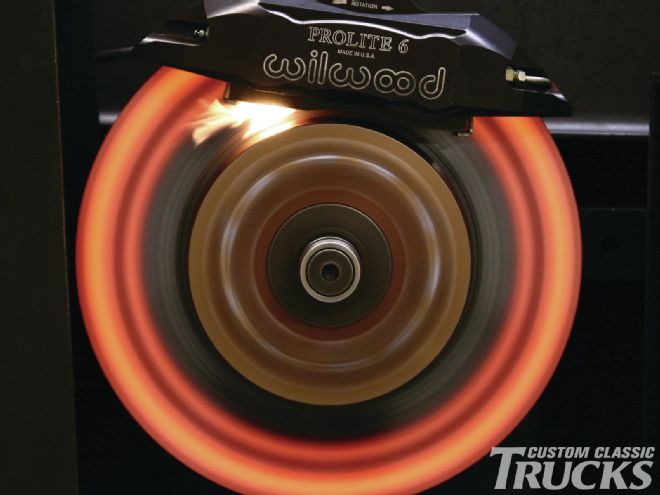 1. So you think you’re hard on brakes? Wilwood’s testing pushes them to extremes they will never see in normal use to learn how to build better products.
1. So you think you’re hard on brakes? Wilwood’s testing pushes them to extremes they will never see in normal use to learn how to build better products.
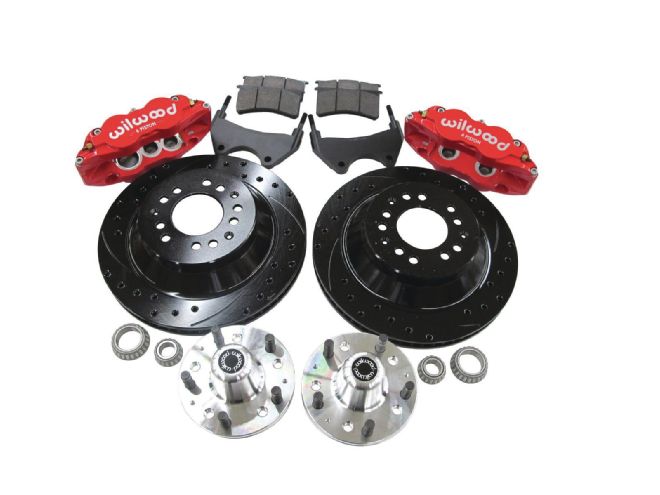 2. For the utmost in stopping power Jason Scudellari equipped his truck with disc brakes from Wilwood. A variety of calipers are available; Jason opted for six-piston calipers up front; the four-piston version will be used on the rear.
2. For the utmost in stopping power Jason Scudellari equipped his truck with disc brakes from Wilwood. A variety of calipers are available; Jason opted for six-piston calipers up front; the four-piston version will be used on the rear.
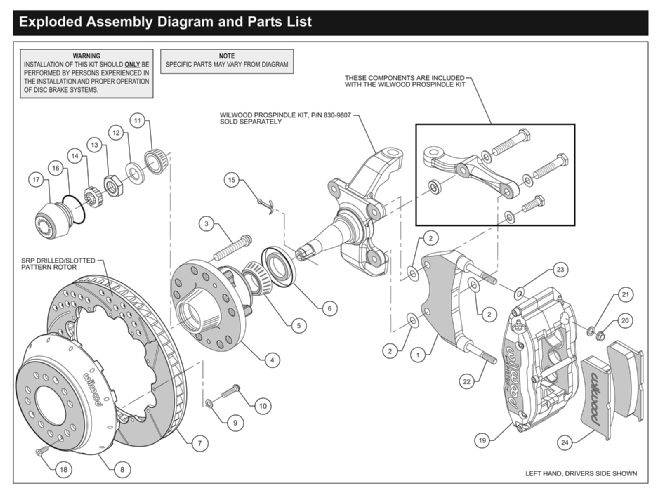 3. This is an exploded view of a typical Wilwood front brake assembly. In this example the rotor and hat are separate pieces.
3. This is an exploded view of a typical Wilwood front brake assembly. In this example the rotor and hat are separate pieces.
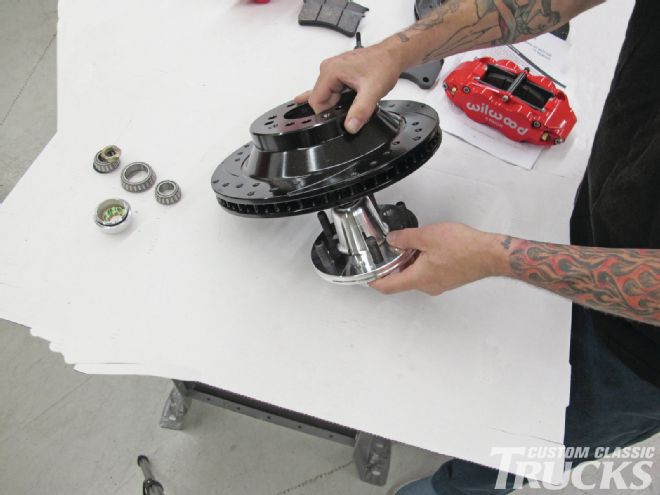 4. Jason began assembly of the front brakes by slipping the aluminum hub in place. These hubs and rotors are drilled with Chevy and Ford stud patterns.
4. Jason began assembly of the front brakes by slipping the aluminum hub in place. These hubs and rotors are drilled with Chevy and Ford stud patterns.
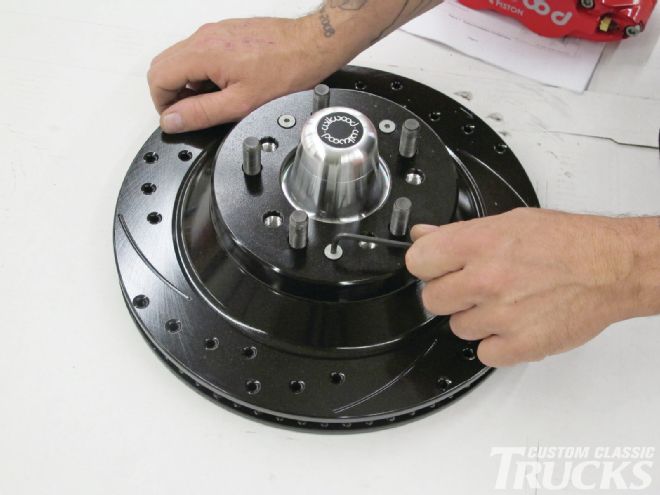 5. While the wheel will hold the rotor firmly against the hub, countersunk socket-head screws are also used to hold them together—it makes assembly easier.
5. While the wheel will hold the rotor firmly against the hub, countersunk socket-head screws are also used to hold them together—it makes assembly easier.
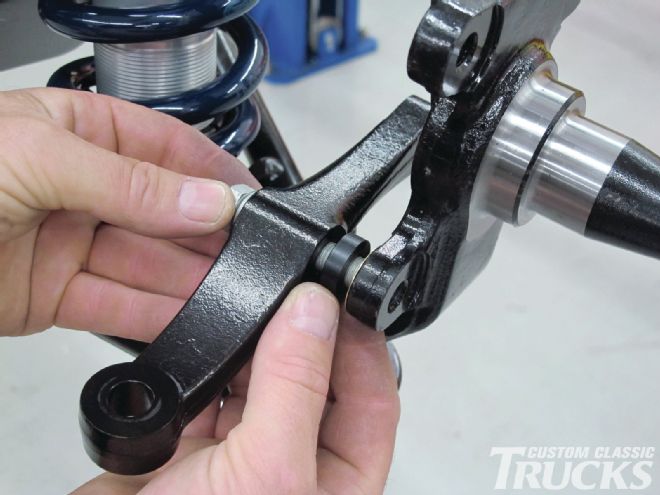 6. The steering arms bolt to the spindles; note the spacer that is used.
6. The steering arms bolt to the spindles; note the spacer that is used.
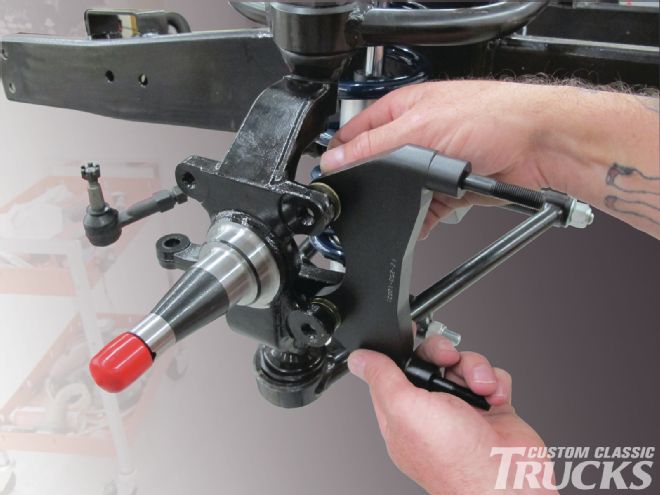 7. This is Wilwood’s unique radial caliper mount. It allows for adjusting the caliper in two planes (closer or farther from the centerline of the spindle pin or axle on one plane—centering the pads over the rotor on the other).
7. This is Wilwood’s unique radial caliper mount. It allows for adjusting the caliper in two planes (closer or farther from the centerline of the spindle pin or axle on one plane—centering the pads over the rotor on the other).
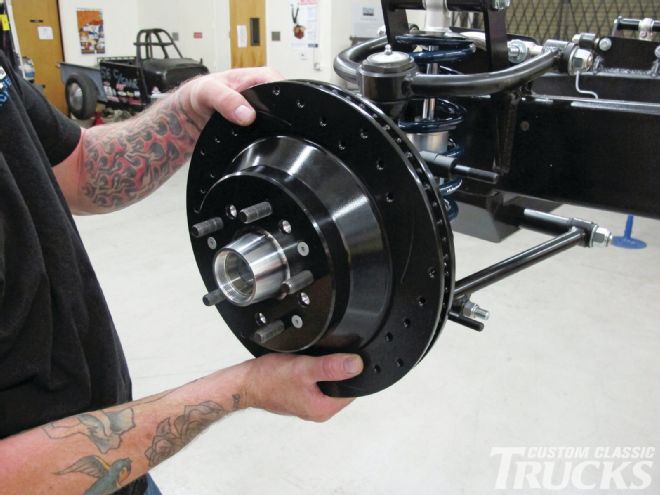 8. Wilwood’s front hubs are forged from aluminum then CNC machined. They come complete with bearing races installed, new bearings, grease seals, screw-on billet aluminum hubcaps, and ½-20 RH Grade-8 wheel studs.
8. Wilwood’s front hubs are forged from aluminum then CNC machined. They come complete with bearing races installed, new bearings, grease seals, screw-on billet aluminum hubcaps, and ½-20 RH Grade-8 wheel studs.
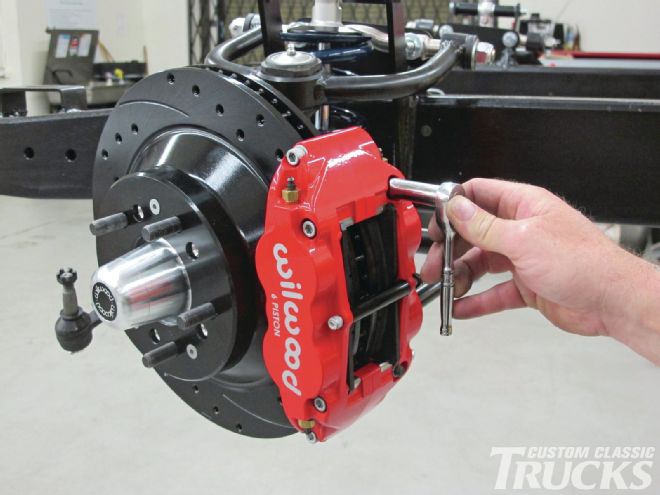 9. Installing the calipers is simply a matter of sliding them over the studs on the mounts. Shims can be added or subtracted to locate the pads on the rotors.
9. Installing the calipers is simply a matter of sliding them over the studs on the mounts. Shims can be added or subtracted to locate the pads on the rotors.
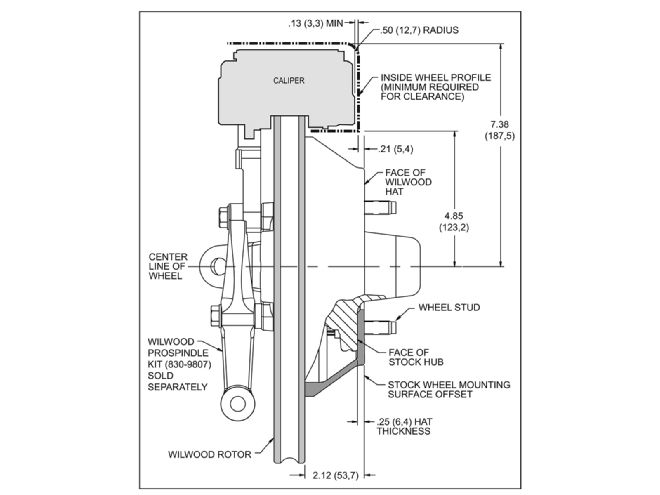 10. To avoid wheel fitment issues, Wilwood offers diagrams illustrating the necessary clearances.
10. To avoid wheel fitment issues, Wilwood offers diagrams illustrating the necessary clearances.
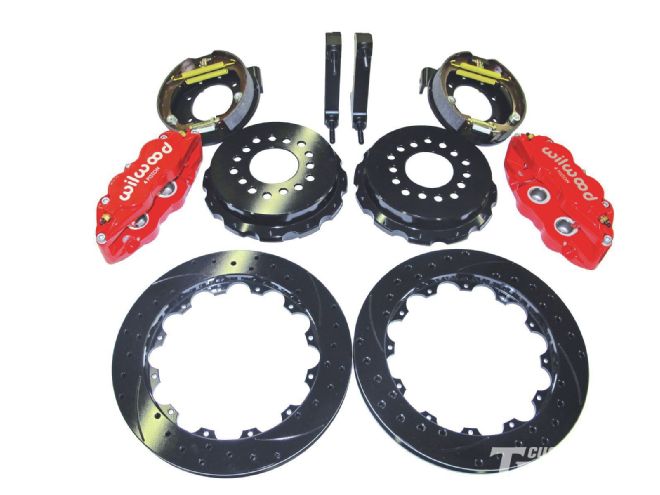 11. In the rear, Jason used Wilwood’s billet four-piston calipers, 13-inch, two-piece rotors with a neatly hidden internal parking brake system.
11. In the rear, Jason used Wilwood’s billet four-piston calipers, 13-inch, two-piece rotors with a neatly hidden internal parking brake system.
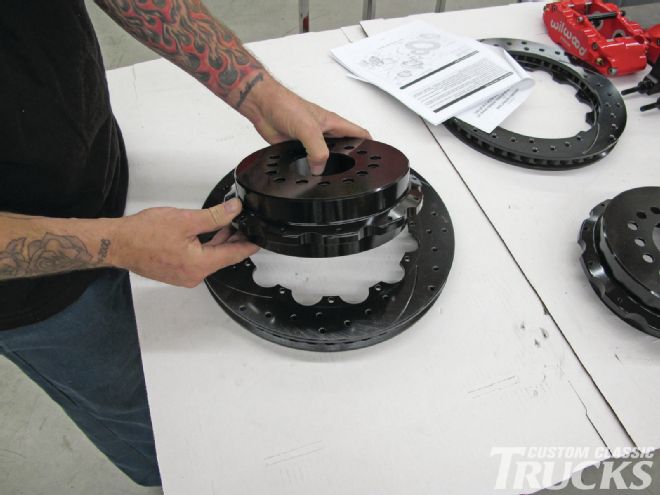 12. For maximum strength, tabs and notches index the hub and rotor.
12. For maximum strength, tabs and notches index the hub and rotor.
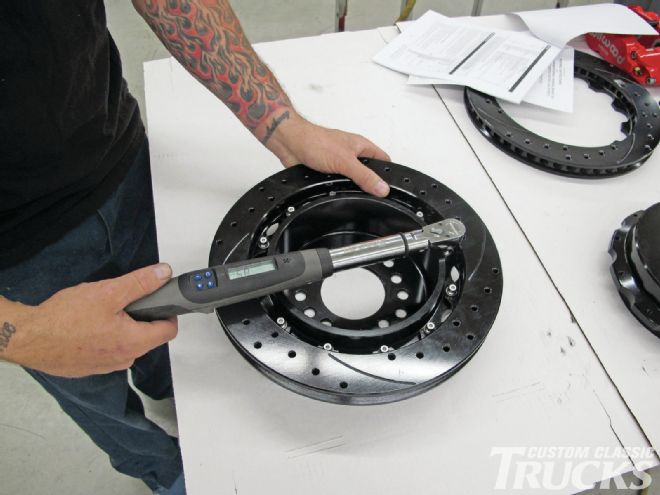 13. To secure the rotor to the hub, socket head fasteners are used. They are torqued to specs.
13. To secure the rotor to the hub, socket head fasteners are used. They are torqued to specs.
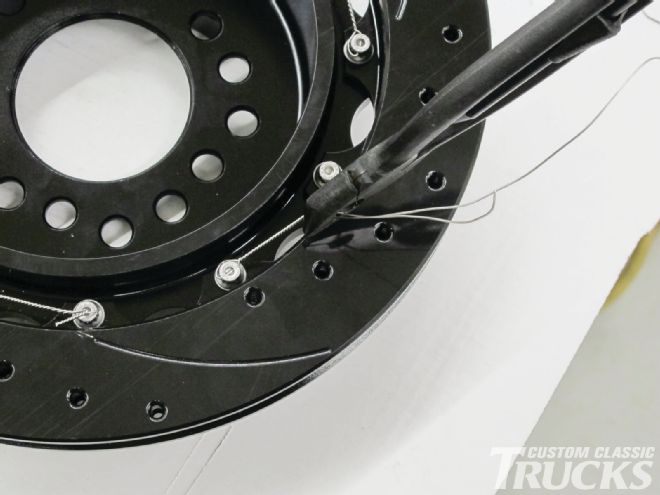 14. For security, the screws are safety-wired after being tightened.
14. For security, the screws are safety-wired after being tightened.
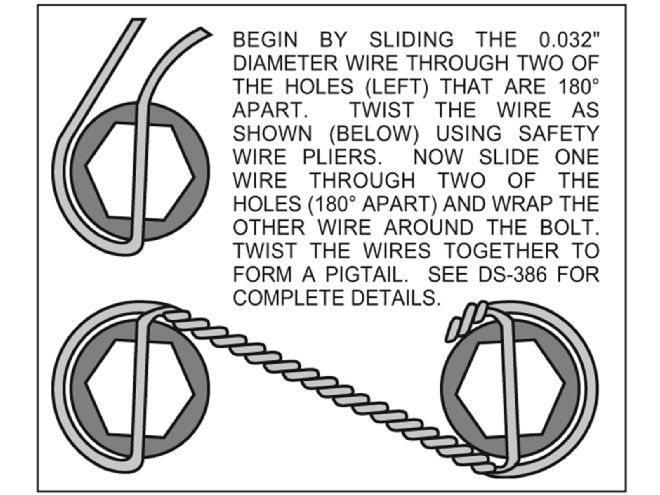 15. This is Wilwood’s recommended procedure for installing safety wire.
15. This is Wilwood’s recommended procedure for installing safety wire.
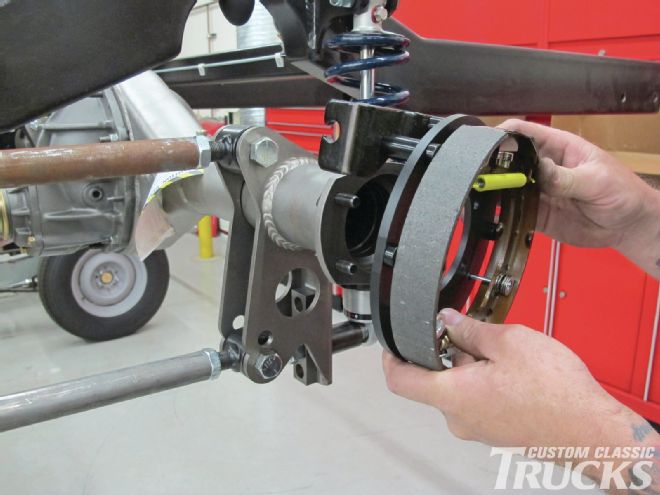 16. Wilwood’s parking brake system uses small, mechanically operated brake shoes. The drums are built into the hats that mount the rotors.
16. Wilwood’s parking brake system uses small, mechanically operated brake shoes. The drums are built into the hats that mount the rotors.
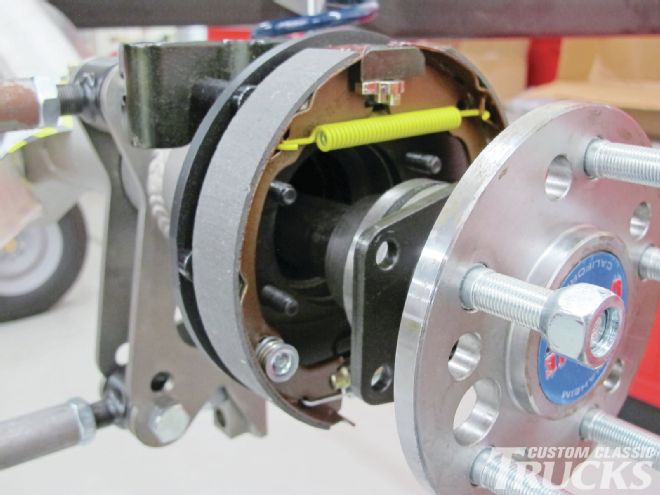 17. With the parking brakes in place the Currie axles were installed.
17. With the parking brakes in place the Currie axles were installed.
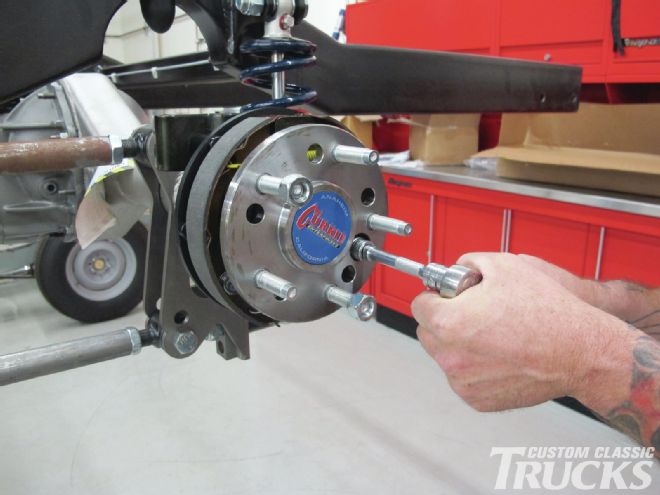 18. A hole in the axle’s flanges provides access to the bearing retainer bolts.
18. A hole in the axle’s flanges provides access to the bearing retainer bolts.
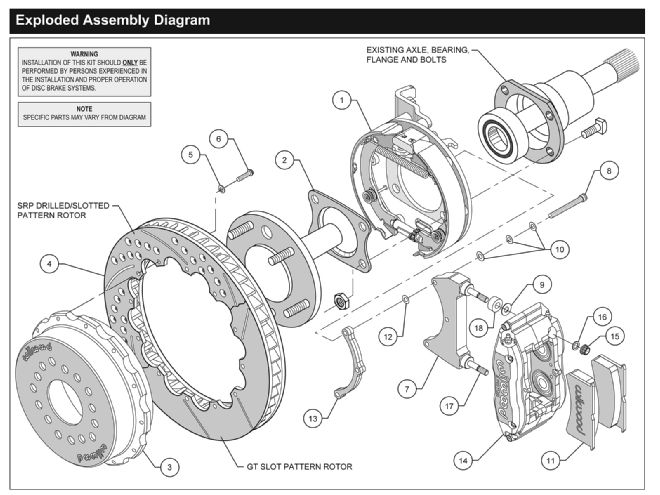 19. This is an exploded view of a typical Wilwood disc kit with an integral parking brake.
19. This is an exploded view of a typical Wilwood disc kit with an integral parking brake.
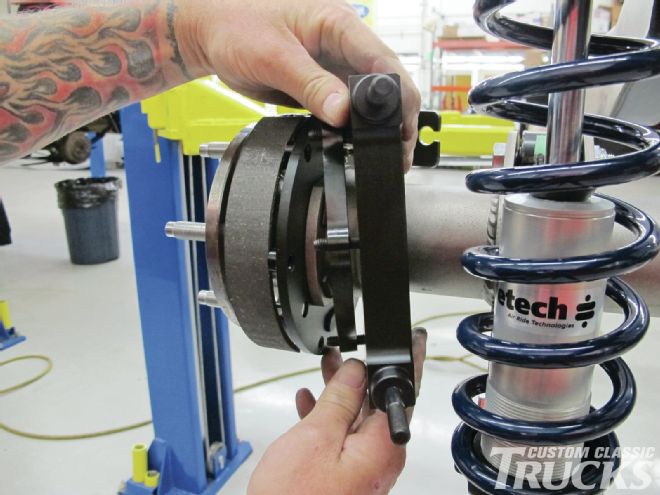 20. As with the front calipers, the rears use Wilwood’s unique radial mount.
20. As with the front calipers, the rears use Wilwood’s unique radial mount.
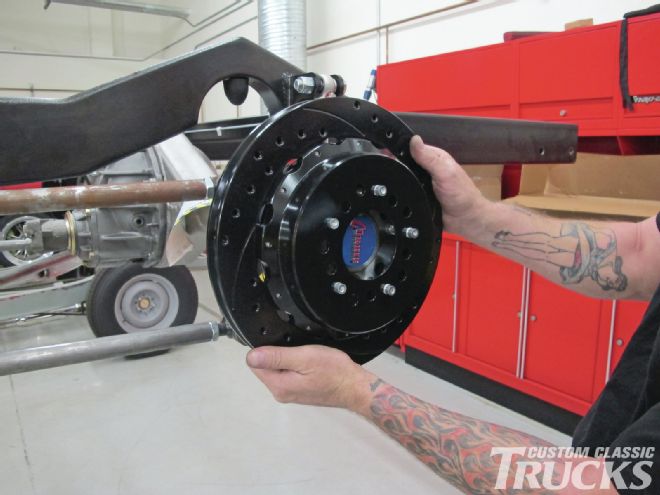 21. The rear disc/drum assembly slides over the studs. It’s held in place by the wheel.
21. The rear disc/drum assembly slides over the studs. It’s held in place by the wheel.
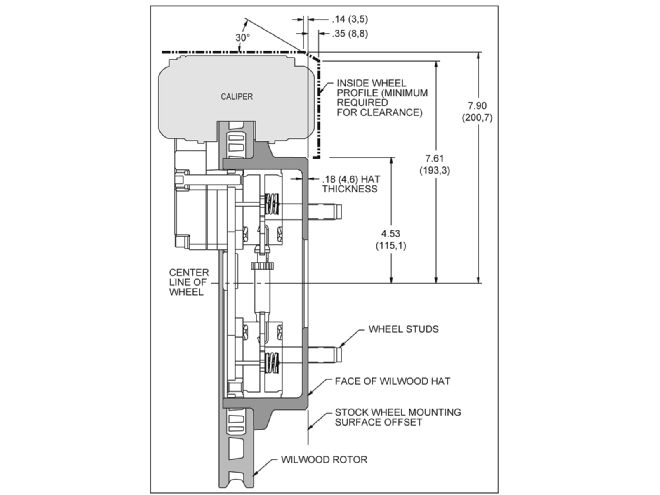 22. This is the wheel clearance diagram for our rear brake kit. Make sure the wheels and brakes are compatible before spending money on either.
22. This is the wheel clearance diagram for our rear brake kit. Make sure the wheels and brakes are compatible before spending money on either.
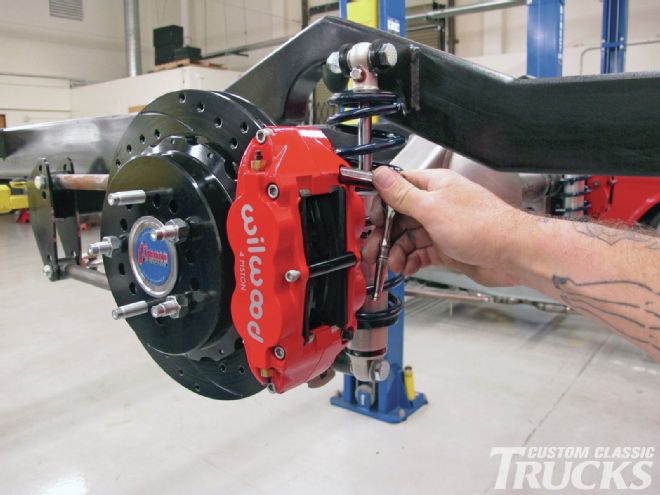 23. All buttoned up and ready to stop. The rear four-piston calipers are also made from billet aluminum and are said to have the highest clamping efficiency and the lowest deflection of any caliper in its class.
23. All buttoned up and ready to stop. The rear four-piston calipers are also made from billet aluminum and are said to have the highest clamping efficiency and the lowest deflection of any caliper in its class.
